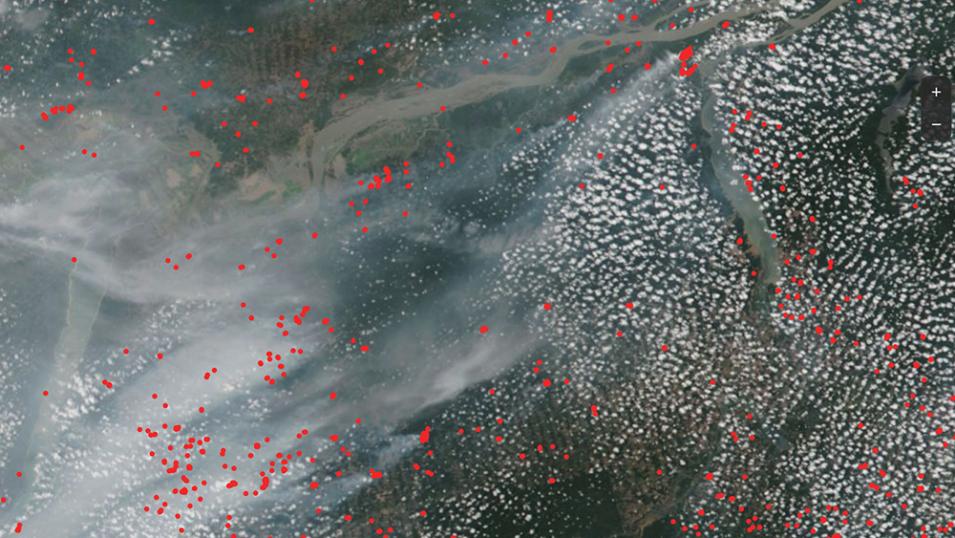Fires and other significant heat sources can be detected from space by sensors aboard some of NASA’s Earth-orbiting satellites. NASA’s Fire Information for Resource Management System (FIRMS) provides these observations in near real-time, and these observations are a tremendous aid to tracking and managing fire events worldwide.
However, sometimes detecting these wildfires from space requires new approaches—such as detecting fires occurring in the dense Amazon rainforest in Brazil. The current El Niño event has brought drought-dry conditions to the usually wet Amazon rainforest. As a result, routine agricultural fires and other human ignitions have escaped into neighboring forests, triggering hundreds of creeping, low-temperature understory fires. While these fires are obviously smoky, the flames are largely hidden beneath the forest’s trees. These understory fires have a devastating impact on the rainforest—often killing 50% of the trees because Amazon species are not adapted to fire. A 2023 Earth Observatory article detailed the significance of air pollution and other problems associated with these fires.
Combating the Amazon’s low-intensity fires is difficult because they are very hard to spot from satellites or are often mislabeled by fire detection algorithms as land or other features. Dr. Shane Coffield, a researcher at NASA's Goddard Space Flight Center in Greenbelt, Maryland, is trying to address these issues by experimenting with tweaking detection algorithms and combining data from different satellites to create systems sensitive enough to reveal these hidden fires.
Blocked from View
“The main reason we can’t easily see these fires is because they are small and the canopy over them is so dense that it intercepts the fire energy and blocks it from reaching the satellite,” said Coffield.
The satellites commonly used to detect fires in the Amazon are the Suomi National Polar-orbiting Partnership (Suomi NPP) and NOAA-20 satellites equipped with the Visible Infrared Imaging Radiometer Suite (VIIRS) sensor. The VIIRS algorithm for remotely-sensing thermal anomalies is based on a similar algorithm developed for the Moderate Resolution Imaging Spectroradiometer (MODIS) instrument aboard NASA’s Terra and Aqua satellites. The MODIS instruments are nearing their mission end and the VIIRS sensors aboard Suomi NPP and NOAA-20 are becoming the primary way to detect and track global fire activity. These satellites and sensors are generally excellent at detecting global wildfires and other thermal anomalies, however, they're not ideal for detecting fire hotspots in the Amazon.
“The satellites pass over the Amazon in the early afternoon and middle of the night when fires aren’t burning at their typical peak, which is generally in the late afternoon,” said Coffield. “The sensor also has a very wide 110-degree view, and most of the time we aren’t getting a very straight down, nadir view, which is our best shot at seeing a fire in the forest understory through the dense tree canopy.”
The resolution for VIIRS data is also a fairly coarse 375-meters, which means that an actual Amazon fire front is a small fraction of a pixel—often less than 1%—making it difficult to detect.

